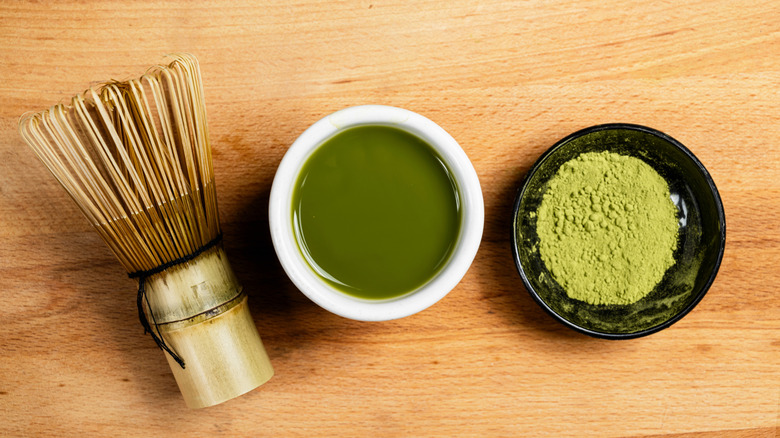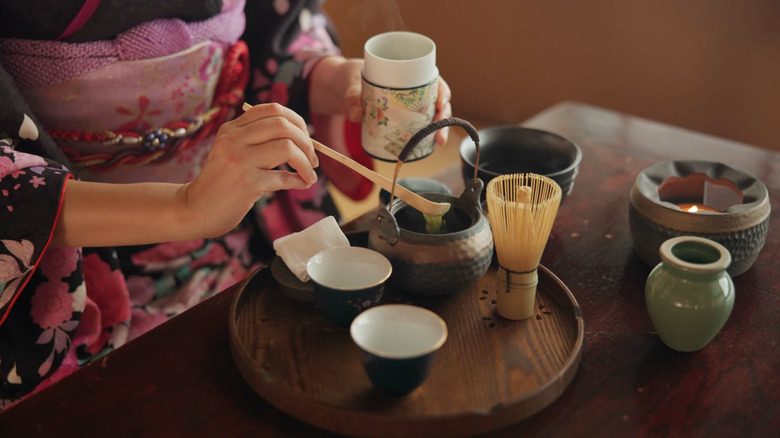What Makes Ceremonial Grade Matcha A Sip Above The Rest
Matcha is a flavorful green tea made from the tea plant, or Camellia sinensis, a flowering evergreen shrub native to many parts of Asia. Specifically, the leaves of the plant are made into tencha, another type of green tea, which is then ground into the fine powder used to make matcha. Matcha tea has an earthy taste with hints of sweetness and umami, and is a very popular drink both in Asia and internationally. It can be found in almost any coffee shop, though ordering variants like the "dirty matcha," or matcha mixed with coffee, may be a red flag that annoys some baristas.
Matcha comes in different grades. Going from highest to lowest, these typically include ceremonial, premium, and culinary. Ceremonial-grade matcha is special for two reasons. The first is that it's the highest quality and best suited for tea making. The second is that it's the only grade that's used in chado, the famous Japanese tea ceremony. Ceremonial grade matcha leaves are from the first harvest of the year, meaning they're more flavorful and have more nutrients. Matcha is primarily produced in the Uji region of Japan.
In contrast, culinary matcha comes from later harvests, and while it's still delicious and nutritious, it's not used in chado. Culinary grade matcha (also sometimes called commercial grade) is typically used for baking, cooking, or making tea outside the tea ceremony. Premium (or daily) grade is a middle ground between the two, producing something better than commercial grade but not precisely at the level of ceremonial.
What is Japan's chado tea ceremony?
The chado tea ceremony is a Japanese tradition that involves two or more people, one acting as the host and the rest as guests, making and drinking matcha tea together. Chado translates to "The way of tea." There are six to eight basic steps, each of which seems simple, but is actually very intricate and precise. Condensed, they are: sending invitations, preparing the tea room for guests, inviting the guests inside, cleaning the tools, preparing and drinking the matcha, cleaning the tools again, and the guests leaving. Individual ceremonies can vary, but this is the basic process. During the ceremony, sometimes two types of tea will be served, a thicker one first and then a thinner tea. Regardless, only pure matcha is served, so there's no adding milk to the tea or any other extra ingredients.
The ceremony is taken very seriously and has multiple rules of etiquette that everyone involved is expected to follow. Again, they can vary, but most of them are basic manners. Among other rules, guests are expected to be punctual, wear appropriate clothing (a kimono is traditional) with clean socks, admire but not touch the decorations, and be attentive and present. Chado is all about four principles: harmony, respect, purity, and tranquility. The basic idea is to be present and grateful, and to savor the moment since time spent with others can't be replicated. It's a form of meditation, and while you won't necessarily find it in full form in Japan's Michelin-starred restaurants, enjoying ceremonial grade matcha is a long-honored and fascinating tradition of Japanese culture.

